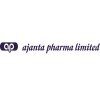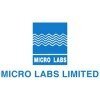
i
Proud winner of ABECA 2025 - AmbitionBox Employee Choice Awards
Filter interviews by
BDR Pharmaceuticals International QC Executive Interview Questions and Answers
8 Interview questions
To prepare a 1.0 N NaOH solution, dissolve 40.0 g of NaOH in enough water to make 1 liter of solution.
To prepare a 1.0 N NaOH solution, you need to know the molar mass of NaOH (40.0 g/mol).
Calculate the number of moles of NaOH required using the formula: moles = N x volume (in liters).
For a 1.0 N solution, the number of moles of NaOH is equal to the desired concentration (1.0 mol/L).
Weigh 40.0 g of NaOH using a ba...
Calibration of Karl Fischer is a process to ensure accuracy and reliability of the moisture determination method.
Calibration involves verifying the performance of the Karl Fischer titration system.
It includes checking the accuracy of the reagents, electrodes, and the instrument itself.
Calibration is typically done using standard solutions with known moisture content.
The instrument readings are compared to the expe...
Calibration of HPLC involves verifying the accuracy and precision of the instrument by comparing the results obtained with known standards.
Calibration of HPLC is essential to ensure accurate and reliable results.
It involves preparing a series of standard solutions with known concentrations of analytes.
These standard solutions are then injected into the HPLC system and the peak areas or heights are measured.
The obt...
Assay by HPLC is a technique used to separate, identify, and quantify components in a sample.
HPLC stands for High-Performance Liquid Chromatography.
It is commonly used in pharmaceutical and chemical industries for quality control purposes.
Assay by HPLC involves injecting a sample into a high-pressure liquid chromatography system, where the components are separated based on their interactions with the stationary ph...
The molecular weight of HNO3 is 63.01 g/mol.
The molecular weight of a compound is the sum of the atomic weights of all the atoms in its chemical formula.
For HNO3, the atomic weight of hydrogen (H) is 1.01 g/mol, nitrogen (N) is 14.01 g/mol, and oxygen (O) is 16.00 g/mol.
Multiplying the atomic weights by the number of atoms in the formula (1 hydrogen, 1 nitrogen, and 3 oxygen) and summing them gives the molecular w...
Resolution refers to the ability to distinguish between two separate points or objects in an image or display.
Resolution is a measure of the level of detail in an image or display.
It is typically measured in terms of pixels or dots per inch (DPI).
Higher resolution means more pixels or dots, resulting in a clearer and sharper image.
Resolution is important in various fields such as photography, video production, and...
R. S in HPLC stands for Relative Standard Deviation.
R. S is a measure of the precision or reproducibility of an HPLC method.
It is calculated by dividing the standard deviation of peak areas by the average peak area and multiplying by 100.
R. S is expressed as a percentage and indicates the variability of peak areas in replicate injections.
A lower R. S value indicates higher precision and better method performance.
F...
The molecular weight of acetic acid is 60.052 g/mol.
The molecular weight of a compound is the sum of the atomic weights of all the atoms in its chemical formula.
The chemical formula of acetic acid is CH3COOH.
The atomic weights of carbon (C), hydrogen (H), and oxygen (O) are 12.01 g/mol, 1.008 g/mol, and 16.00 g/mol respectively.
Calculating the molecular weight of acetic acid: (12.01 * 2) + (1.008 * 4) + 16.00 + 1....
BDR Pharmaceuticals International QC Executive Interview Experiences
1 interview found
I applied via Walk-in and was interviewed before Jan 2023. There were 3 interview rounds.
(9 Questions)
- Q1. What is R. S in HPLC?
- Ans.
R. S in HPLC stands for Relative Standard Deviation.
R. S is a measure of the precision or reproducibility of an HPLC method.
It is calculated by dividing the standard deviation of peak areas by the average peak area and multiplying by 100.
R. S is expressed as a percentage and indicates the variability of peak areas in replicate injections.
A lower R. S value indicates higher precision and better method performance.
For ex...
- Q2. What is assay by HPLC and ehy perform?
- Ans.
Assay by HPLC is a technique used to separate, identify, and quantify components in a sample.
HPLC stands for High-Performance Liquid Chromatography.
It is commonly used in pharmaceutical and chemical industries for quality control purposes.
Assay by HPLC involves injecting a sample into a high-pressure liquid chromatography system, where the components are separated based on their interactions with the stationary phase.
T...
- Q3. What is resolution?
- Ans.
Resolution refers to the ability to distinguish between two separate points or objects in an image or display.
Resolution is a measure of the level of detail in an image or display.
It is typically measured in terms of pixels or dots per inch (DPI).
Higher resolution means more pixels or dots, resulting in a clearer and sharper image.
Resolution is important in various fields such as photography, video production, and disp...
- Q4. How calibration of karl fisher?
- Ans.
Calibration of Karl Fischer is a process to ensure accuracy and reliability of the moisture determination method.
Calibration involves verifying the performance of the Karl Fischer titration system.
It includes checking the accuracy of the reagents, electrodes, and the instrument itself.
Calibration is typically done using standard solutions with known moisture content.
The instrument readings are compared to the expected ...
- Q5. How calibration of HPLC?
- Ans.
Calibration of HPLC involves verifying the accuracy and precision of the instrument by comparing the results obtained with known standards.
Calibration of HPLC is essential to ensure accurate and reliable results.
It involves preparing a series of standard solutions with known concentrations of analytes.
These standard solutions are then injected into the HPLC system and the peak areas or heights are measured.
The obtained...
- Q6. How prepared 1.0 N NaoH solution?
- Ans.
To prepare a 1.0 N NaOH solution, dissolve 40.0 g of NaOH in enough water to make 1 liter of solution.
To prepare a 1.0 N NaOH solution, you need to know the molar mass of NaOH (40.0 g/mol).
Calculate the number of moles of NaOH required using the formula: moles = N x volume (in liters).
For a 1.0 N solution, the number of moles of NaOH is equal to the desired concentration (1.0 mol/L).
Weigh 40.0 g of NaOH using a balance...
- Q7. What is molecular weight of HNO3?
- Ans.
The molecular weight of HNO3 is 63.01 g/mol.
The molecular weight of a compound is the sum of the atomic weights of all the atoms in its chemical formula.
For HNO3, the atomic weight of hydrogen (H) is 1.01 g/mol, nitrogen (N) is 14.01 g/mol, and oxygen (O) is 16.00 g/mol.
Multiplying the atomic weights by the number of atoms in the formula (1 hydrogen, 1 nitrogen, and 3 oxygen) and summing them gives the molecular weight...
- Q8. What is molecular weight of ACETIC ACID?
- Ans.
The molecular weight of acetic acid is 60.052 g/mol.
The molecular weight of a compound is the sum of the atomic weights of all the atoms in its chemical formula.
The chemical formula of acetic acid is CH3COOH.
The atomic weights of carbon (C), hydrogen (H), and oxygen (O) are 12.01 g/mol, 1.008 g/mol, and 16.00 g/mol respectively.
Calculating the molecular weight of acetic acid: (12.01 * 2) + (1.008 * 4) + 16.00 + 1.008 =...
- Q9. Did you now about T. L. C crometography?
(2 Questions)
- Q1. Why you leave your present company
- Q2. What is your expectations
(1 Question)
- Q1. How many months notice period
Top trending discussions






Interview questions from similar companies

I applied via Walk-in and was interviewed before Jan 2019. There were 3 interview rounds.
Interview Questionnaire
1 Question
- Q1. The vacancy was for Autoclave and brevetti (automatic inspection machine). So I was asked about everything for those 2 machines (qualifications, validation, guidelines, what to do in case of malfunctioning...
Interview Preparation Tips

Interview Questionnaire
3 Questions
- Q1. What do you know about QMS?
- Ans.
QMS stands for Quality Management System.
QMS is a set of policies, processes, and procedures implemented to ensure quality in an organization.
It helps in meeting customer requirements and improving overall efficiency.
QMS includes activities such as quality planning, quality control, quality assurance, and quality improvement.
It is often based on international standards like ISO 9001.
QMS can be applied in various indust...
- Q2. Define CA PA?
- Q3. Tell me any Deviation?
- Ans.
Deviation refers to any departure from the expected or standard procedure.
Deviation can occur in various aspects such as behavior, performance, or results.
Examples of deviations can include failure to follow protocols, exceeding budget limits, or producing subpar work.
Deviation can be identified through monitoring, audits, or feedback from supervisors or colleagues.
Addressing deviations often involves corrective action...

Interview Preparation Tips
You need to stay calm and should apply presence of mind. Please go through the job description thoroughly word-by-word and recheck your resume to ensure that you are a best-fit for the position.
Skills: Communication

I applied via Campus Placement and was interviewed before Nov 2020. There were 3 interview rounds.
Interview Questionnaire
2 Questions
- Q1. What are salary expecations?
- Ans.
I expect a competitive salary that reflects my experience and the value I bring to the organization.
Research industry standards: For example, similar roles in our region typically offer between $X and $Y.
Consider my experience: With over Z years in leadership, I believe a salary in the range of $A to $B is appropriate.
Value addition: My previous role increased revenue by C%, which I aim to replicate here.
Flexibility: I...
- Q2. Will you sign bond?
- Ans.
Signing a bond signifies commitment and accountability, essential for trust in executive roles.
A bond often ensures that I will fulfill my responsibilities and obligations.
For example, in a healthcare setting, signing a bond may be necessary to ensure compliance with regulations.
It reflects my dedication to the organization and its goals.
I understand the implications and am willing to accept the terms outlined in the b...
Interview Preparation Tips

I applied via Walk-in and was interviewed in Mar 2021. There were 3 interview rounds.
Interview Questionnaire
1 Question
- Q1. How has culture of micro lab
Interview Preparation Tips

I applied via Walk-in and was interviewed in Apr 2021. There was 1 interview round.
Interview Questionnaire
2 Questions
- Q1. Why did you quit your previous job?
- Ans.
I left my previous job to pursue new challenges and align my career with my long-term goals in leadership and innovation.
I sought opportunities for professional growth that were not available in my previous role.
I wanted to work in an environment that fosters innovation and creativity, which I found lacking.
I was looking for a position that aligns more closely with my career aspirations in strategic leadership.
I felt t...
- Q2. How can I believe you won’t quit this job also in future?
- Ans.
My commitment to growth and stability ensures I won't quit this job, as I value long-term contributions and relationships.
I have a history of long tenures at previous positions, demonstrating my loyalty and commitment.
I prioritize professional development and seek roles that align with my career goals, ensuring I invest in my future here.
I believe in building strong relationships with my team and the organization, whic...
Interview Preparation Tips

I applied via Walk-in and was interviewed in Feb 2021. There were 3 interview rounds.
Interview Questionnaire
1 Question
- Q1. About basic knowledge in our department
Interview Preparation Tips

I applied via Recruitment Consultant and was interviewed in Feb 2021. There were 3 interview rounds.
Interview Questionnaire
1 Question
- Q1. Evaluation parameter of tablet,21 CFR , Data integrity
Interview Preparation Tips
Skills evaluated in this interview

I applied via Walk-in and was interviewed in Oct 2020. There were 3 interview rounds.
Interview Questionnaire
2 Questions
- Q1. About Gamp5 guidelines
- Q2. About qualifications and validations and CSV
Interview Preparation Tips
BDR Pharmaceuticals International Interview FAQs
Tell us how to improve this page.
BDR Pharmaceuticals International Interviews By Designations
- BDR Pharmaceuticals International Senior Officer Interview Questions
- BDR Pharmaceuticals International Technician Interview Questions
- BDR Pharmaceuticals International Assistant Manager Interview Questions
- BDR Pharmaceuticals International Executive Interview Questions
- BDR Pharmaceuticals International QA Executive Interview Questions
- BDR Pharmaceuticals International Officer Interview Questions
- BDR Pharmaceuticals International Trainee Interview Questions
- BDR Pharmaceuticals International Executive Production Interview Questions
- Show more
Interview Questions for Popular Designations
Overall Interview Experience Rating
based on 1 interview experience
Difficulty level
Duration
QC Executive Interview Questions from Similar Companies
BDR Pharmaceuticals International QC Executive Reviews and Ratings
based on 1 review
Rating in categories
|
Officer
173
salaries
| ₹1.8 L/yr - ₹5.1 L/yr |
|
Senior Officer
137
salaries
| ₹3 L/yr - ₹6.6 L/yr |
|
Executive
125
salaries
| ₹3.9 L/yr - ₹8.4 L/yr |
|
Senior Executive
84
salaries
| ₹5.5 L/yr - ₹9.1 L/yr |
|
Assistant Manager
72
salaries
| ₹6.4 L/yr - ₹12 L/yr |

Hetero

Abbott

Micro Labs

Ajanta Pharma
- Home >
- Interviews >
- BDR Pharmaceuticals International Interview Questions













